| Listing 1 - 10 of 26 | << page >> |
Sort by
|
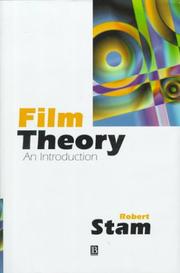
ISBN: 063120654X 9780631206545 9780631206538 Year: 2000 Publisher: Malden (Mass.): Blackwell,
Abstract | Keywords | Export | Availability | Bookmark
 Loading...
Loading...Choose an application
- Reference Manager
- EndNote
- RefWorks (Direct export to RefWorks)
Film --- Motion pictures --- Philosophy. --- Théorie du cinéma --- Cinéma --- Esthétique --- Histoire et critique --- 82:791.43 --- 82:3 --- Literatuur en film --- Literatuur en maatschappijwetenschappen --- 82:3 Literatuur en maatschappijwetenschappen --- 82:791.43 Literatuur en film --- Philosophy --- Théorie du cinéma. --- Esthétique. --- Histoire et critique. --- Histoire du cinéma. --- Motion pictures - Philosophy. --- #SBIB:309H1320 --- De filmische boodschap: algemene werken (met inbegrip van algemeen filmhistorische werken en filmhistorische werken per land) --- Théorie du cinéma. --- Cinéma --- Histoire du cinéma. --- Esthétique.

ISBN: 0822320487 Year: 1997 Publisher: Durham, NC London Duke University Press
Abstract | Keywords | Export | Availability | Bookmark
 Loading...
Loading...Choose an application
- Reference Manager
- EndNote
- RefWorks (Direct export to RefWorks)
Race relations in motion pictures --- Racism in motion pictures --- Racisme dans le cinéma --- Racisme in de film --- Rassenverhoudingen in de film --- Relations raciales dans le cinéma --- Motion pictures --- Brazil --- Motion pictures - Brazil. --- Race relations in motion pictures. --- Racism in motion pictures.
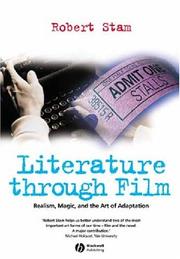
ISBN: 140510287X 1405102888 9781405102889 9781405102872 Year: 2005 Publisher: Malden, MA: Blackwell Pub.,
Abstract | Keywords | Export | Availability | Bookmark
 Loading...
Loading...Choose an application
- Reference Manager
- EndNote
- RefWorks (Direct export to RefWorks)
Film --- Literature --- 82:791.43 --- 791.43:82 --- 791.43:82 Film en literatuur --- Film en literatuur --- 82:791.43 Literatuur en film --- Literatuur en film --- Film adaptations --- Motion pictures and literature --- Literature and motion pictures --- Moving-pictures and literature --- History and criticism --- Motion pictures and literature. --- History and criticism. --- Film adaptations - History and criticism
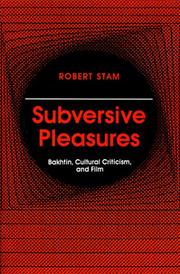
ISBN: 0801845092 Year: 1992 Publisher: Baltimore Johns Hopkins university press
Abstract | Keywords | Export | Availability | Bookmark
 Loading...
Loading...Choose an application
- Reference Manager
- EndNote
- RefWorks (Direct export to RefWorks)
Book
ISBN: 1282133659 9786613806239 0813540992 9780813540993 0813537258 9780813537252 9781282133655 6613806234 081353724X 9780813537245 Year: 2006 Publisher: Piscataway Rutgers University Press
Abstract | Keywords | Export | Availability | Bookmark
 Loading...
Loading...Choose an application
- Reference Manager
- EndNote
- RefWorks (Direct export to RefWorks)
One of François Truffaut's most poignantly memorable films, Jules and Jim, adapted a novel by the French writer and art collector Henri-Pierre Roch. The characters and events of the 1960s film were based on a real-life romantic triangle, begun in the summer of 1920, which involved Roch himself, the German-Jewish writer Franz Hessel, and his wife, the journalist Helen Grund. Drawing on this film and others by Truffaut, Robert Stam provides the first in-depth examination of the multifaceted relationship between Truffaut and Roch. In the process, he provides a unique lens through which to understand how adaptation works-from history to novel, and ultimately to film-and how each form of expression is inflected by the period in which it is created. Truffaut's adaptation of Roch's work, Stam suggests, demonstrates how reworkings can be much more than simply copies of their originals; rather, they can become an immensely creative enterprise-a form of writing in itself. The book also moves beyond Truffaut's film and the mnage--trois involving Roch, Hessel, and Grund to explore the intertwined lives and work of other famous artists and intellectuals, including Marcel Duchamp, Walter Benjamin, and Charlotte Wolff. Tracing the tangled webs that linked these individuals' lives, Stam opens the door to an erotic/writerly territory where the complex interplay of various artistic sensibilities-all mulling over the same nucleus of feelings and events-vividly comes alive.
Jules et Jim (Motion picture). --- Roche, Henri Pierre, -- 1879-1959. -- Jules et Jim. --- Truffaut, Francois -- History and criticism. --- Music, Dance, Drama & Film --- Film --- Roché, Henri Pierre, --- Truffaut, François --- History and criticism. --- Deux Anglaises et le continent (Motion picture). --- History and criticism --- Jules et Jim (Motion picture) --- Deux Anglaises et le continent (Motion picture) --- Truffaut, François - History and criticism --- Roché, Henri Pierre, - 1879-1959. - Jules et Jim --- Roché, Henri Pierre, - 1879-1959. - Deux Anglaises et le continent
Book
ISBN: 9781138369573 9781138369597 9780429428579 042942857X 9780429767395 0429767390 9780429767401 0429767404 9780429767388 0429767382 1138369578 1138369594 Year: 2019 Publisher: London Routledge, Taylor & Francis Group
Abstract | Keywords | Export | Availability | Bookmark
 Loading...
Loading...Choose an application
- Reference Manager
- EndNote
- RefWorks (Direct export to RefWorks)
"With extraordinary transnational and transdisciplinary range, World Literature, Transnational Cinema, and Global Media comprehensively explores the genealogies, vocabularies, and concepts orienting the fields within literature, cinema and media studies. Orchestrating a layered conversation between arts, disciplines, and media, Stam argues for their "mutual embeddedness" and their shared "in-between" territories. Rather than merely add to the existing scholarship, the book builds a relational framework through the connectivities within literature, cinema and media that opens up analysis to new categories and concepts, whilst crossing spatial, temporal, theoretical, disciplinary, and mediatic borders. The book also questions an array of hierarchies: literature over cinema; source novel over adaptation; feature film over documentary; erudite over vernacular culture; western modernisms over "peripheral" modernisms; classical over popular music; written poetry over sung poetry, and so forth. The book is structured around the concept of the "Commons," forming a strong thread which links various struggles against "enclosures" of all kinds, with emphasis on natural, indigenous, cultural, creative, digital, and the transdisciplinary commons. World Literature, Transnational Cinema, and Global Media is ideal to further the theoretical discussion for those undergraduate and graduate departments in cinema studies, media studies, arts and art history, communications, journalism, and new digital media programs at all levels"--
Mass communications --- Film --- Literature --- Literature and transnationalism --- Motion pictures and transnationalism --- Mass media and globalization --- Transnationalism and motion pictures --- Transnationalism --- Transnationalism and literature --- Globalization and mass media --- Globalization
Book
ISBN: 9781350282360 1350282367 9781350282353 1350282359 Year: 2023 Publisher: London ; New York : Bloomsbury Academic,
Abstract | Keywords | Export | Availability | Bookmark
 Loading...
Loading...Choose an application
- Reference Manager
- EndNote
- RefWorks (Direct export to RefWorks)
Against the long historical backdrop of 1492, Columbus, and the Conquest, Robert Stam's wide-ranging study traces a trajectory from the representation of indigenous peoples by others to self-representation by indigenous peoples, often as a form of resistance and rebellion to colonialist or neoliberal capitalism, across an eclectic range of forms of media, arts, and social philosophy.Spanning national and transnational media in countries including the US, Brazil, Canada, France, Germany, and Italy, Stam orchestrates a dialogue between the western mediated gaze on the 'Indian' and the indigenous gaze itself, especially as incarnated in the burgeoning movement of “indigenous media,” that is, the use of audio-visual-digital media for the social and cultural purposes of indigenous peoples themselves. Drawing on examples from cinema, literature, music, video, painting and stand-up comedy, Stam shows how indigenous artists, intellectuals and activists are responding to the multiple crises - climatological, economic, political, racial, and cultural - confronting the world. Significant attention is paid to the role of arts-based activism in supporting the struggle of indigenous artistic activism, of the Yanomami people specifically, to save the Amazon forest and the planet.
Indigenous peoples --- Indigenous peoples in art --- Indigenous peoples in literature --- Indigenous peoples in motion pictures --- Indigenous peoples in popular culture --- Intellectual life --- Ethnology --- Popular culture --- Motion pictures --- Adivasis in literature --- Indigenous peoples and mass media --- Intellectual life. --- Indigenous peoples in art. --- Indigenous peoples in motion pictures. --- Indigenous peoples in popular culture. --- Indigenous peoples and mass media. --- Film theory & criticism. --- Indigenous peoples. --- Colonialism & imperialism. --- Hispanic & Latino studies. --- Performing Arts --- Political Science --- History --- Films, cinema. --- Film & Video --- General. --- History & Criticism. --- Colonialism & Post-Colonialism. --- Americas (North, Central, South, West Indies).
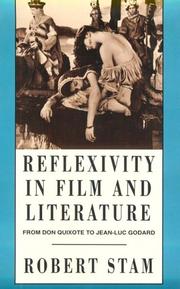
ISBN: 0231079443 0231079451 Year: 1992 Publisher: New York : Columbia University Press,
Abstract | Keywords | Export | Availability | Bookmark
 Loading...
Loading...Choose an application
- Reference Manager
- EndNote
- RefWorks (Direct export to RefWorks)
Literature, Modern --- Motion picture plays --- Motion pictures and literature --- Motion pictures and theater --- Theater --- Littérature moderne --- Scénarios de cinéma --- Cinéma et littérature --- Cinéma et théâtre --- Théâtre --- History and criticism --- History --- Histoire et critique --- Histoire
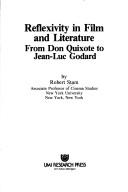
ISBN: 0835716074 Year: 1985 Publisher: Ann Arbor Umi research press
Abstract | Keywords | Export | Availability | Bookmark
 Loading...
Loading...Choose an application
- Reference Manager
- EndNote
- RefWorks (Direct export to RefWorks)
Literature, Modern --- Motion picture plays --- Motion pictures and literature --- Motion pictures and theater --- Theater --- History and criticism --- History
Digital
ISBN: 9780813540993 9780813537245 Year: 2006 Publisher: New Brunswick, N.J. Rutgers University Press
Abstract | Keywords | Export | Availability | Bookmark
 Loading...
Loading...Choose an application
- Reference Manager
- EndNote
- RefWorks (Direct export to RefWorks)
| Listing 1 - 10 of 26 | << page >> |
Sort by
|

 Search
Search Feedback
Feedback About UniCat
About UniCat  Help
Help News
News